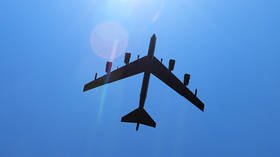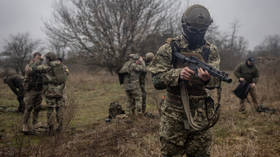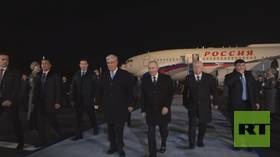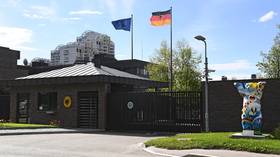Pentagon relaunches Cold War-era Assault Breaker program to fend off Russia & China – report
The Pentagon has dusted off a Cold war era concept to deal with large attacking forces, revamping it to fight Russia and China. While all the technologies are in place, the new-look program will come to fruition only in 10 years.
The Defense Advanced Research Projects Agency (DARPA) is resurrecting the decades-old Assault Breaker concept, Aviation Week reported Monday. The concept, once intended to prevent hordes of Soviet tanks from steamrolling NATO forces in western Europe, is now refurbished to fight China and Russia (again). Or, at least, to dissuade them from launching any “surprise attacks” on the US and its allies.
The original Assault Breaker project, conceived in late 1970s, focused on creating precision-guided munitions and submunitions, which could identify and destroy the armored targets of the Soviets.
In case of a surprise attack, B-52 strategic bombers and JSTARS command and control aircraft would be dispatched to stop and cripple the advancing forces. Each plane would carry at least 20 Assault Breaker ‘bus’ missiles, each packed with 40 smart submunitions. On top of that, submunition ‘buses’ could have been fired by ground-based MRLS systems.
Upon reaching the enemy’s amassed troops, the missiles would release submunitions, which, for their part, would identify tanks and other important hardware with acoustic, laser and other sensors, striking them at soft spots.
While the concept was never fully fleshed-out, it indeed laid the foundation for a range of smart-weapon systems, guided submunitions and so on. Some of them are still in use, while others – like Brilliant Anti-Tank (BAT) munitions – have been discontinued, due to high costs and to the disappearance of the hypothetical threat they were designed to counter.
Also on rt.com ‘I worry’: Top US nuclear general concerned about new Russian weapons, future of arms controlIt is not immediately clear why exactly such a program is needed again, given the ever-growing NATO that is surely not outnumbered by pesky Russkies in Europe anymore. Not to mention that, with the widespread use of anti-tank weaponry in infantry units, meeting massive tank hordes is an even less likely scenario than it used to be in 1970s.
Regarding China, meeting any sizeable ground forces from Beijing is unlikely for the US as well. Therefore, the Assault Breaker II will supposedly be adapted to the Pacific theater and become suitable to target bases, radars and even naval targets. No, not sinking ships altogether, but rather damaging vital equipment to render them beyond combat.
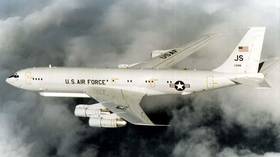
The new iteration of the Assault Breaker will reportedly rely on the very same planes it used in the 1970s – B-52s and JSTARS. While nearly all the required technologies are said to be already in place, Assault Breaker II can be fielded only within about 10 years – and God knows after how many billions spent.
Like this story? Share it with a friend!
